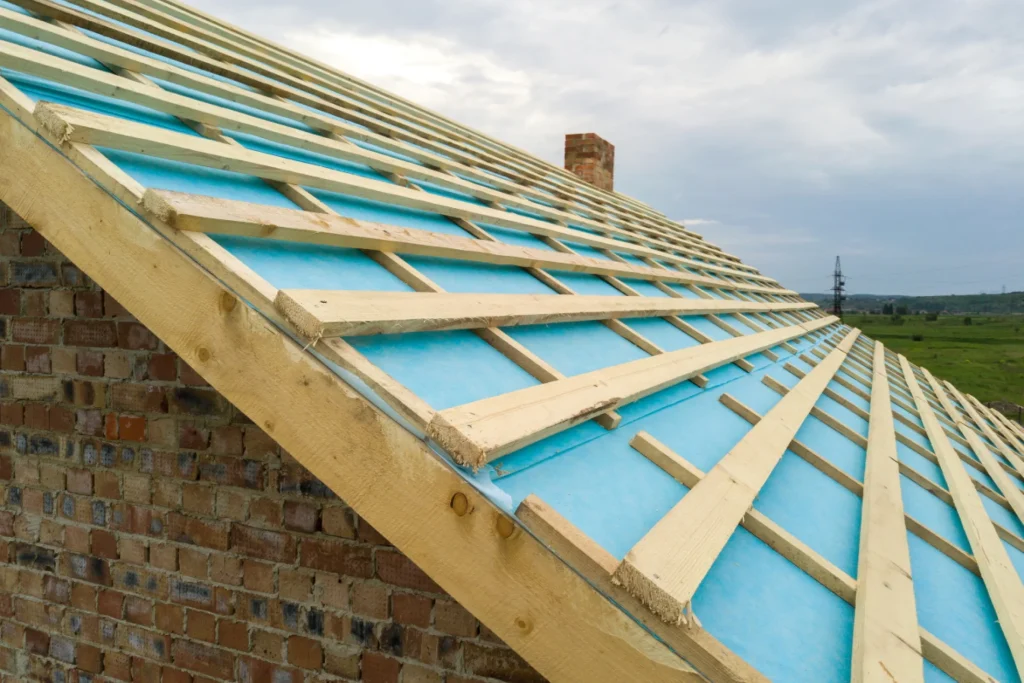When it’s time to replace your roof, you may wonder if there’s a way to do it that’s not only efficient but also aesthetically pleasing. One increasingly popular option is installing a standing seam metal roof over your existing shingles. This innovative approach not only saves you time and money but also provides several benefits. In this article, we’ll explore the concept of standing seam metal roofing, its advantages, the installation process, and what you should consider before making this roofing choice.

Understanding Standing Seam Metal Roofing
What is a Standing Seam Metal Roof?
A standing seam metal roof is a type of metal roofing system characterized by raised seams or vertical legs that stand above the level of the roofing panel. These seams are then connected with concealed fasteners, creating a sleek, continuous, and watertight roofing surface. Standing seam roofs are known for their modern and clean appearance.
Advantages of Installing a Standing Seam Metal Roof Over Shingles
- Energy Efficiency: Metal roofs, including standing seam options, are highly reflective, meaning they reflect sunlight rather than absorbing it. This can result in reduced cooling costs during hot months.
- Durability: Metal roofs are known for their longevity. They can last 50 years or more, far exceeding the lifespan of most shingle roofs.
- Minimal Maintenance: Metal roofs require very little maintenance, with occasional inspections and cleanings being the primary tasks.
- Weather Resistance: Metal roofs can withstand a wide range of weather conditions, including heavy rain, snow, hail, and high winds.
- Environmentally Friendly: Many metal roofing materials are recyclable, making them an eco-friendly choice.
The Installation Process
1: Assessment and Preparation
- Begin by assessing the condition of your existing shingle roof. It should be in reasonably good shape with no major issues.
- Repair any damaged shingles, and ensure that the roof deck is solid and capable of supporting the additional weight of the metal roof.
2: Installation of Strapping or Purlins
- Install wooden strapping or purlins over the existing shingles. These provide an even surface for the metal roofing panels and create an airspace for ventilation.
3: Metal Roof Panel Installation
- Start installing the standing seam metal roofing panels from the bottom of the roof, working your way upward.
- Secure each panel with concealed fasteners, ensuring that the seams overlap correctly to create a watertight seal.
4: Ridge and Flashing Installation
- Install ridge caps at the roof’s peak and flashings around roof penetrations like chimneys and vents to prevent water infiltration.
5: Finishing Touches
- Finally, complete any finishing touches, such as sealing seams and cleaning up the work area.
Considerations Before Installing a Standing Seam Metal Roof Over Shingles
Before making this roofing choice, consider the following factors:
- Local Building Codes: Check with your local building department to ensure that this type of installation is allowed in your area.
- Weight: Standing seam metal roofs are heavier than shingle roofs. Ensure that your roof structure can support the additional weight.
- Cost: While standing seam metal roofs are durable and long-lasting, they can be more expensive upfront compared to shingle roofs.
- Contractor Selection: Hire an experienced contractor who specializes in standing seam metal roofing installations for the best results.
Conclusion
Installing a standing seam metal roof over shingles is a modern and efficient way to transform your roofing system. It offers numerous benefits, from energy efficiency to longevity, and provides a sleek and attractive appearance. However, it’s essential to carefully assess your existing roof, consult local building codes, and work with a qualified contractor to ensure a successful installation. With the right approach, a standing seam metal roof can enhance your home’s aesthetics and performance for many years to come.



Leave a Reply